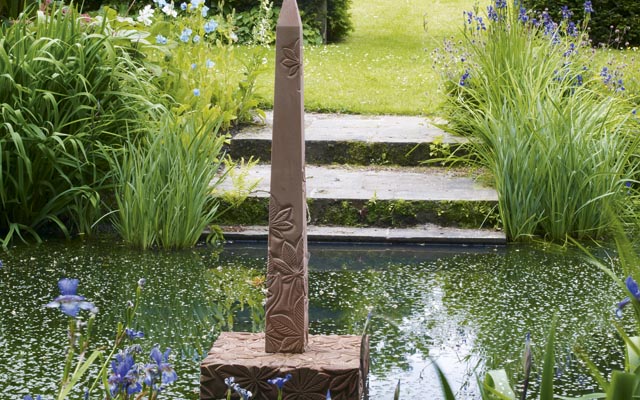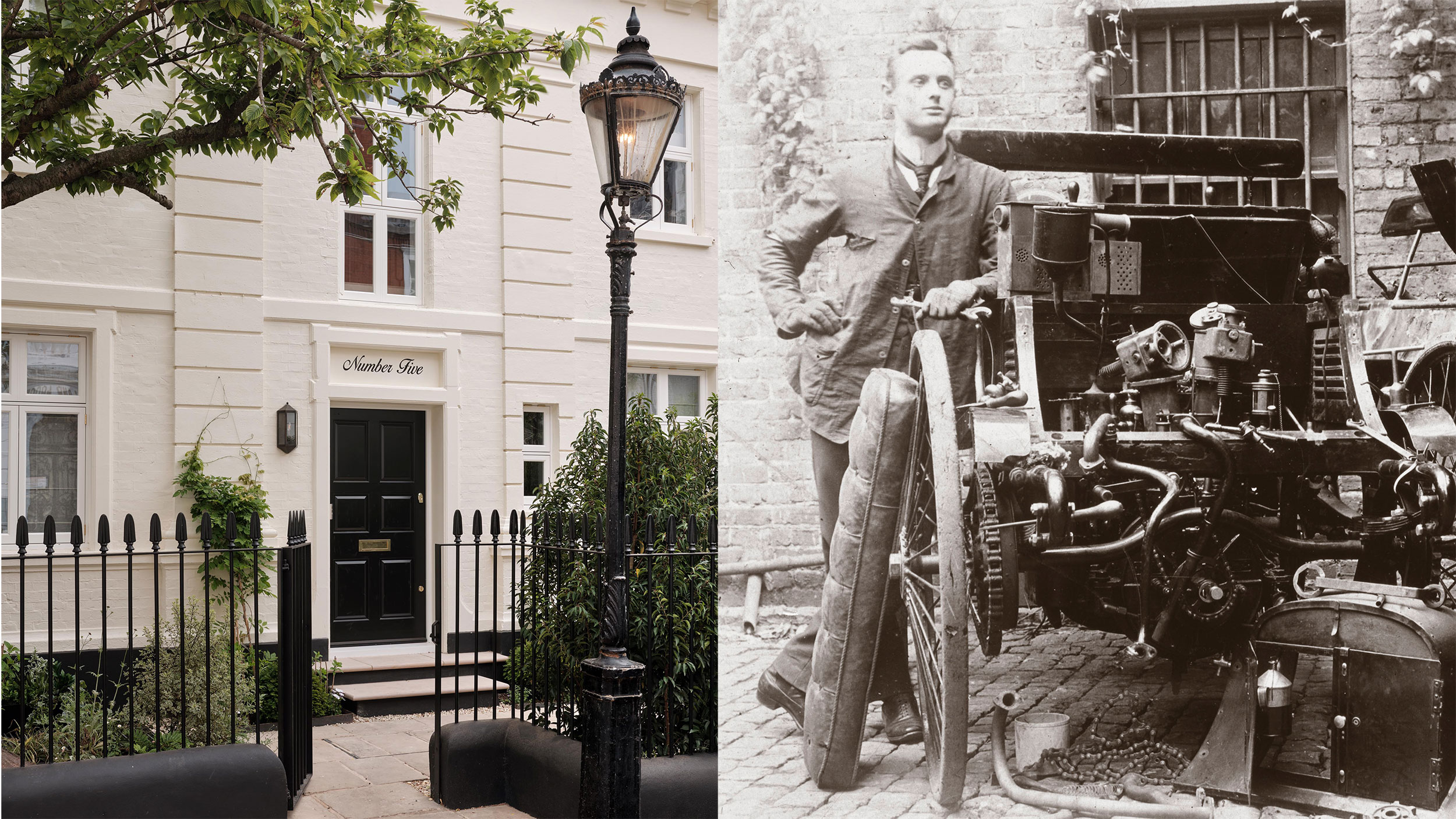Dunessling, Dumfriesshire, Scotland
Tim Longville visits a Scottish garden which conjures a harmony between house, garden and landscape


Dunesslin is about as close to ‘the back of beyond’ as can be found in Dumfriesshire. The handsome old house (Country Life, July 13, 2000), whose oldest section dates from about 1700, and its handsome new garden, created by present owners Iain and Zara Milligan since they acquired the property in the late 1980s, are hidden at the end of a tiny lane high in the hills beyond the upland village of Dunscore.
Although she claims that it’s ‘just evolved’, Mrs Milligan certainly had a definite style in mind for the garden here, one she felt would suit both the house and its setting. ‘Great Dixter was an inspiration for me as it has been for many people. And I love the garden at Kellie Castle, with its combination of fruit trees and herbaceous borders. That sort of look as if there aren’t quite enough gardeners and the whole place is just about to go over—is what I’ve tried to get.’ Those two influences one English, one Scottish neatly suggest Dunesslin’s romantic Anglo-Scottish style.
When the Milligans bought Dunesslin, however, its garden had gone over all too literally. Before the Second World War, it had been owned by a relative of the plant-hunter Frank Kingdon-Ward, which may explain why there are still some fine old rhododendrons here. But, otherwise, little was here by the late 1980s, recalls Mrs Milligan. Their land did, however, have the advantages of a surprisingly sheltered site and a free-draining if stony soil. ‘We took stones out by the trailer load and still there are lots!’
A crucial early development was commissioning the architect Charles Morris not only to work on the house including the addition of a tower, which has already merged seamlessly into the rest of the building but to help with their redesign of the garden. Now, he and the Milligans have given it a series of strong shapes within which Mrs Milligan’s intensive planting can romp, but still be controlled.
Their first fundamental move was to change the approach to the house, from the east to the south. That allowed the eastern side of the garden to come right up to the house, in the shape of narrow beds full of plants that will cope with the relatively cold aspect. Now, Japanese anemones and Hydrangea Annabelle, with seas of lady’s mantle at their feet, dominate the shadier sections and a pineapple broom and a huge, dome-shaped hebe occupy the sunniest corner.
Beyond, two handsome stone-walled terraces were introduced to formalise the two levels of lawn and clearing away a clutter of rhododendrons revealed what Mrs Milligan accurately describes as ‘the lovely view’. It fades away down the glen across a prospect of rich fields and rolling hills.
As what had been the side of the house now became its front, it needed a suitable ‘introductory’ garden. The solution, again a collaboration between Mr Morris and the Milligans, was a design based on three triangular beds, the central one given a box triangle at each corner and the two side ones given a single one each, at their front-facing angles.
Exquisite houses, the beauty of Nature, and how to get the most from your life, straight to your inbox.
Within the beds, herbs such as marjoram and rosemary happily consort with sun-loving perennials such as salvias, eryngiums and alliums. Permanent evergreen structure is provided by dwarf hebes and the Australian mint bush, Prostanthera cuneata.
A narrow path beside the house then leads to Dunesslin’s major sequence of spaces. To the side is a miniature formal rose garden of box-hedged beds, in which old-fashioned roses emerge from a multicoloured sea of aquilegias, alliums, lilies, thalictrums and penstemons. Next comes a long and relatively narrow lawned compartment, surrounded by castellated yew hedges and entirely unadorned except for a froth of lady’s mantle at the foot of the hedge. That restrained simplicity occurs ‘to give some architectural counterpoint and because we think gardens need changes of mood’.
It is certainly a change from what comes next the garden’s largest single space and also its most complex and colourful. The walled garden is entirely the Milligans’ creation. They added a second wall to the only existing one and yew hedges now enclose the other two sides. The land here slopes both from top to bottom and from right to left, but they’ve created a cleverly off-kilter formal design to disguise that.
Within it, Mrs Milligan has planted more old roses (including the striking idea of informal low hedges of the old rose Charles de Mills, loosely controlled within bamboo hoops) whose dense underplanting, she insists, is not pre-planned. ‘I just use my favourites, the plants I love. If something doesn’t work where I put it, then I move it. Things get moved a lot here.’
There are also, with a nod to Kellie Castle, lines of espaliered fruit trees among the roses and herbaceous plants and many specimen trees and shrubs, including an acer, a magnolia and a liriodendron, ‘which is in quite the wrong place. It was just meant to be heeled in there, but by the time we thought to move it, it had grown too big’.
The overall effect is one of intensely floriferous abundance, teetering on the edge of ‘losing it’ but, crucially, staying just this side. ‘I’ve planted far too much, of course,’ Mrs Milligan confesses ruefully. ‘In the beginning, it seemed such a huge space. Now, it seems terribly small, so we have to do lots of cutting back.’
That’s also true in the pond garden, created a decade or so ago beside the walled garden and now with its own small central stone obelisk. It also features its own version of Mrs Milligan’s characteristically lush planting, which here includes irises, rodgersias and gunnera as well as two spectacular inherited shrubs, survivors from an earlier garden here, a vast philadelphus and a fine eucryphia.
Beyond the walled garden lies a small orchard of fruit trees beneath which the grass in spring is thick with wildflowers, particularly fritillaries. Beside it, a path leads to another of Mr Morris’s contributions to the garden: a fine south-facing stone-framed lean-to greenhouse at the gable end of an old gardener’s bothy.
There is more stonework, on an even more imposing scale, just to the east of the bothy and greenhouse, in the shape of two long and large rockery beds, many of their individual pieces of sandstone weighing several hundredweight. These beds were constructed by Jim Hanson, who combines skills as stone-waller, gardener and garden designer and has, says Mrs Milligan gratefully, ‘been a sympathetic sounding board for many years for my ideas on developments in the garden’.
In the beds, quite large shrubs, including magnolias and rhododendrons, have been used to create in effect what Mrs Milligan describes as ‘miniature rooms’, in which she can keep an eye on tiny ‘treasures’ that tend to get lost in the lush abundance of the main garden. Those are the main areas of the garden at the moment but, elsewhere, there are two further major developments, one already begun, the other firmly on Mrs Milligan’s agenda for the future.
On the far side of the drive are the remains of what was once a sizeable woodland garden. Here, scrub has already been removed, good plants saved, streams cleared and paths created, although rabbits are still a problem and there is an ongoing debate as to whether more trees need to be removed to let in more light.
Higher up the valley, their land contains a spectacular gorge, which is ‘currently full of bracken, but, in my mind’s eye, already planted with rhododendrons and azaleas’.
The garden at Dunesslin, Dunscore, Dumfriesshire, opens occasionally for Scotland’s Gardens and other local charities.
This article was first published in Country Life on August 6 2014
-
 The London house where Rolls-Royce's co-founder Charles Rolls tinkered with his very first car is for sale at £17 million
The London house where Rolls-Royce's co-founder Charles Rolls tinkered with his very first car is for sale at £17 millionCharles Rolls, the engineer and co-founder of Rolls-Royce, got his hands dirty when using the stables of this fine London home as a makeshift garage. Annabel Dixon reports.
-
 The sparkling history of the match and why its inventor never got the credit he deserved
The sparkling history of the match and why its inventor never got the credit he deservedWe’ve been using matches for 200 years–but, as Rob Crossan discovers, the story of how they came to be is far more colourful (and hair-raising) than we might imagine.
